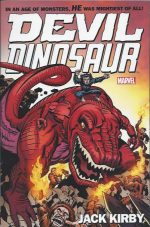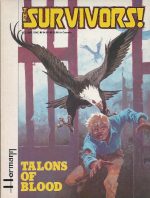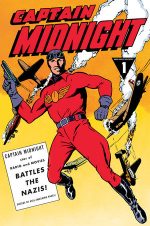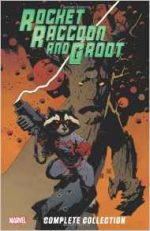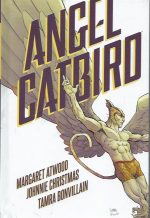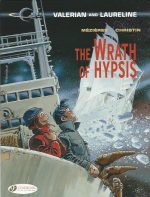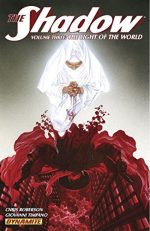
By Chris Roberson, Giovanni Timpano & various (Dynamite Entertainment)
ISBN: 978-1-60690-461-9
In the early 1930s, The Shadow gave thrill-starved Americans their measured doses of extraordinary excitement via cheaply produced pulp periodical novels, and over the mood-drenched airwaves through his own radio show.
“Pulps†were published in every style and genre in their hundreds every month, ranging from the truly excellent to the pitifully dire, but for exotic or esoteric adventure-lovers there were two stars who outshone all others. The Superman of his day was Doc Savage, whilst the premier dark, relentless creature of the night dispensing terrifying grim justice was the putative hero under discussion here.
Radio series Detective Story Hour – based on stand-alone yarns from the Street & Smith publication Detective Story Magazine – used a spooky-toned narrator (variously Orson Welles, James LaCurto or Frank Readick Jr.) to introduce each tale. He was dubbed “the Shadow†and from the very start on July 31st 1930, he was more popular than the stories he highlighted.
The Shadow evolved into a proactive hero solving instead of narrating mysteries and, on April 1st 1931, began starring in his own printed adventures, written by the incredibly prolific Walter Gibson under the house pseudonym Maxwell Grant. On September 26th 1937 the radio show officially became The Shadow with the eerie motto “Who knows what evil lurks in the hearts of Men? The Shadow knows!†ringing out unforgettably over the nation’s airwaves.
Over the next eighteen years 325 novels were published, usually at the rate of two a month. The uncanny crusader spawned comicbooks, seven movies, a newspaper strip and all the merchandising paraphernalia you’d expect of a superstar brand.
The pulp series officially ended in 1949 although Gibson and others added to the canon during the 1960s when a pulp/fantasy revival gripped the world, generating reprinted classic yarns and a run of new stories as paperback novels.
In graphic terms The Shadow was a major player. His national newspaper strip – by Vernon Greene – launched on June 17th 1940 and when comicbooks really took off the Man of Mystery had his own four-colour title; running from March 1940 to September 1949.
Archie Comics published a controversial contemporary reworking in 1964-1965 under their Radio/Mighty Comics imprint, by Robert Bernstein, Jerry Siegel, John Rosenberger and Paul Reinman. In 1973 DC acquired the rights to produce a captivating, brief and definitive series of classic comic sagas unlike any other superhero title then on the stands.
DC periodically revived the venerable vigilante. After the runaway success of Crisis on Infinite Earths, The Dark Knight Returns and Watchman, Howard Chaykin was allowed to utterly overhaul the vintage feature for an audience at last acknowledged as grown-up enough to handle more sophisticated fare.
This led to further, adult-oriented iterations (and even one cracking outing – Hitler’s Astrologer – from Marvel) before Dark Horse assumed the license of the quintessential grim avenger for the latter half of the 1990s and beyond.
Dynamite Entertainment secured the option in 2011 and, whilst reissuing much of those other publishers’ earlier efforts, began a series of new monthly Shadow comics.
Set in the turbulent 1930s and war years that followed, these were crafted by some of the top writers in the industry, each taking their shot at the immortal legend, and all winningly depicted by a succession of extremely gifted illustrators.
This third volume – collecting #13-18 of the monthly comicbook from 2013 – comes courtesy of author Chris Roberson (House of Mystery, iZombie, Cinderella: From Fabletown with Love, Superman/Batman) and illustrator Giovanni Timpano, ably abetted by colourist FabrÃcio Guerra and letterer Rob Steen. This time the Master of the Dark prowls the bloody streets of New York in search of a fantastic vigilante as deadly and remorseless as himself…
The drama begins as yet another rich, powerful man is butchered whilst secretly indulging in sordid pleasures of the flesh. The perpetrator is rumoured to be a ghostly, sword-wielding “lady phantomâ€â€¦
Very few know that the black-cloaked fist of final retribution known as The Shadow masquerades by day as abrasive, indolent playboy Lamont Cranston. Most are agents in his employ: all aware of his semi-mystical abilities to detect thoughts and cloud the minds of men. They are about to learn that there are other beings blessed with uncanny abilities, relentless determination and unshakeable agendas…
Cranston and his paramour/top operative Margo Lane begin their investigations at the prestigious Cobalt Club: pumping the wealthy patrons and Police Commissioner Weston in the guise of idle gossip-mongering and scandal-seeking…
The authorities, it seems, give little credence to the testimony of prostitutes – the only survivors of the attacks – and have dismissed reports of a vengeful woman as sole perpetrator. The Shadow’s operatives are far more astute and less prejudiced: information is gathered and soon after the Dispenser of Vengeance is on hand when the woman in white confronts her next victim…
As the first of a series of poignant flashbacks begins to reveal the secret of the bizarrely radiant swordswoman, in the modern moment of her confrontation with The Shadow, the Master of Men quickly realises this seeming angel of death is every inch his equal in the arts of combat. In fact, her ability to cast a blinding glow might well give her the edge…
After a brutal duel he manages to drive her off before she can finish off her latest victim, but, before he or the police can get any useful information from the survivor, the maimed man is silently butchered in his locked and guarded hospital room…
And thus the war between light and darkness progresses with The Shadow losing battles but gradually winning the war: inexorably closing in on The Light by pitting all his resources and risking his greatest assets to trap his glowing antithesis who works for the most pure, if misguided, of causes…
Dynamite publishes periodicals with a vast array of cover variants and here that gallery features a wealth of iconic alternate visions by Alex Ross, Francesco Francavilla, Tim Bradstreet, Paolo Rivera and Jason Shawn Alexander to delight any art lover’s eyes and heart.
Moody and brooding, The Light of the World is a solid pulp thriller with an intriguing history and premise for its “player on the other side†scenario, plenty of action and a spectacular cinematic climax at the top of New York’s steel-&-concrete canyons…
This is another superb addition to the annals of the original Dark Knight, and one no one addicted to action and mystery should miss.
The Shadow ® & © 2013 Advance Magazine Publishers Inc. d/b/a Conde Nast. All Rights Reserved.

